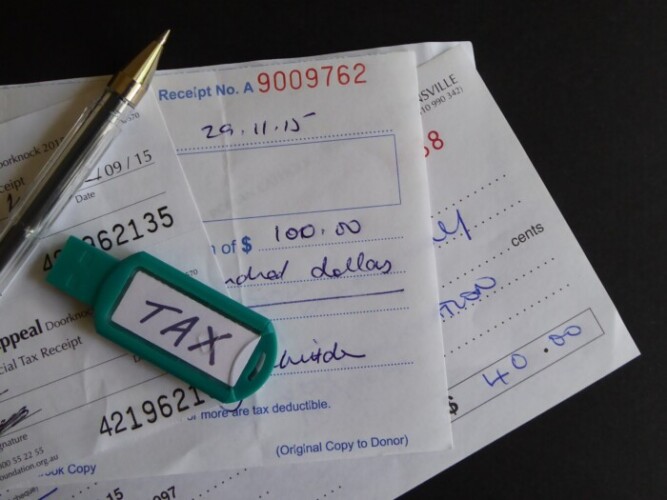IRS Tax Topics
Tax Documents Retention Guide
Tax Preparation Checklist
Tax Rates
Explore IRS Tax Topics
Source | irs.gov
| When, How, and Where to File | Topic No. 301 |
| Checklist of Common Errors when Preparing Your Tax Return | Topic No. 303 |
| Extensions of Time to File Your Tax Return | Topic No. 304 |
| Recordkeeping | Topic No. 305 |
| Penalty for Underpayment of Estimated Tax | Topic No. 306 |
| Backup Withholding | Topic No. 307 |
| Amended Returns | Topic No. 308 |
| Roth IRA Contributions | Topic No. 309 |
| Coverdell Education Savings Accounts | Topic No. 310 |
| RS Services – Volunteer Tax Assistance, Outreach Programs, and Identity Theft | Topic No. 101 |
| Tax Assistance for Individuals with Disabilities | Topic No. 102 |
| Tax Help for Small Businesses and the Self-Employed | Topic No. 103 |
| Taxpayer Advocate Service – Your Voice at the IRS | Topic No. 104 |
| Armed Forces Tax Information | Topic No. 105 |
| Tax Relief in Disaster Situations | Topic No. 107 |
| Earned Income Credit | Topic No. 601 |
| Child and Dependent Care Credit | Topic No. 602 |
| Adoption Credit and Adoption Assistance Programs | Topic No. 607 |
| Excess Social Security and RRTA Tax Withheld | Topic No. 608 |
| Retirement Savings Contributions Credit | Topic No. 610 |
| Repayment of the First-Time Homebuyer Credit | Topic No. 611 |
| The Premium Tax Credit | Topic No. 612 |
| Wages and Salaries | Topic No. 401 |
| Interest Received | Topic No. 403 |
| Dividends | Topic No. 404 |
| Business Income | Topic No. 407 |
| Capital Gains and Losses | Topic No. 409 |
| Pensions and Annuities | Topic No. 410 |
| Pensions – The General Rule and the Simplified Method | Topic No. 411 |
| Lump-Sum Distributions | Topic No. 412 |
| Rollovers from Retirement Plans | Topic No. 413 |
| Rental Income and Expenses | Topic No. 414 |
| Renting Residential and Vacation Property | Topic No. 415 |
| Farming and Fishing Income | Topic No. 416 |
| Earnings for Clergy | Topic No. 417 |
| Unemployment Compensation | Topic No. 418 |
| Gambling Income and Losses | Topic No. 419 |
| Bartering Income | Topic No. 420 |
| Scholarships, Fellowship Grants, and Other Grants | Topic No. 421 |
| Social Security and Equivalent Railroad Retirement Benefits | Topic No. 423 |
| 401(k) Plans | Topic No. 424 |
| Passive Activities – Losses and Credits | Topic No. 425 |
| Stock Options | Topic No. 427 |
| Traders in Securities (Information for Form 1040 or 1040-SR Filers) | Topic No. 429 |
| Receipt of Stock in a Demutualization | Topic No. 430 |
| Canceled Debt – Is It Taxable or Not? | Topic No. 431 |
| Form 1099-A (Acquisition or Abandonment of Secured Property) and Form 1099-C (Cancellation of Debt) | Topic No. 432 |
| Individual Retirement Arrangements (IRAs) | Topic No. 451 |
| Alimony and Separate Maintenance | Topic No. 452 |
| Bad Debt Deduction | Topic No. 453 |
| Moving Expenses for Members of the Armed Forces | Topic No. 455 |
| Student Loan Interest Deduction | Topic No. 456 |
| Educator Expense Deduction | Topic No. 458 |
| Should I Itemize? | Topic No. 501 |
| Medical and Dental Expenses | Topic No. 502 |
| Deductible Taxes | Topic No. 503 |
| Home Mortgage Points | Topic No. 504 |
| Interest Expense | Topic No. 505 |
| Charitable Contributions | Topic No. 506 |
| Business Use of Home | Topic No. 509 |
| Business Use of Car | Topic No. 510 |
| Business Travel Expenses | Topic No. 511 |
| Work-Related Education Expenses | Topic No. 513 |
| Casualty, Disaster, and Theft Losses | Topic No. 515 |
| Sale of Your Home | Topic No. 701 |
| Basis of Assets | Topic No. 703 |
| Depreciation | Topic No. 704 |
| Installment Sales | Topic No. 705 |
| The Collection Process | Topic No. 201 |
| Tax Payment Options | Topic No. 202 |
| Reduced Refund | Topic No. 203 |
| Offers in Compromise | Topic No. 204 |
| Innocent Spouse Relief (Including Separation of Liability and Equitable Relief) | Topic No. 205 |
| Dishonored Payments | Topic No. 206 |
| our Appeal Rights | Topic No. 151 |
| Refund Information | Topic No. 152 |
| What to Do if You Haven’t Filed Your Tax Return | Topic No. 153 |
| Form W-2 and Form 1099-R (What to Do if Incorrect or Not Received) | Topic No. 154 |
| Obtaining Forms and Publications | Topic No. 155 |
| Copy or Transcript of Your Tax Return – How to Get One | Topic No. 156 |
| Change Your Address – How to Notify the IRS | Topic No. 157 |
| Paying Your Taxes and Ensuring Proper Credit of Payments | Topic No. 158 |
| How to Get a Transcript or Copy of Form W-2 | Topic No. 159 |
| Returning an Erroneous Refund – Paper Check or Direct Deposit | Topic No. 161 |
| Notices – What to Do | Topic No. 651 |
| Notice of Underreported Income – CP2000 | Topic No. 652 |
| IRS Notices and Bills, Penalties, and Interest Charges | Topic No. 653 |
| Understanding Your CP75 or CP75A Notice Request for Supporting Documentation | Topic No. 654 |

“Passport can be denied or revoked if more than $50,000 remains unpaid”

Explore Tax Documents Retention Guide
Records you must keep such as receipts, canceled checks, and other documents that support an item of income, a deduction, or a credit appearing on a return as long as they may become material in the administration of any provision of the Internal Revenue Code, which generally will be until the period of limitations expires for that return.
Keep records for 3 years if last three situations below do not apply to you.
- Keep records for 3 years from the date you filed your original return or 2 years from the date you paid the tax, whichever is later, if you file a claim for credit or refund after you file your return.
- Keep records for 7 years if you file a claim for a loss from worthless securities or bad debt deduction.
- Keep records for 6 years if you do not report income that you should report, and it is more than 25% of the gross income shown on your return.
- Keep employment tax records for at least 4 years after the date that the tax becomes due or is paid, whichever is later. Keep records indefinitely if you do not file a return. Keep records indefinitely if you file a fraudulent return.
- Keep employment tax records for at least 4 years after the date that the tax becomes due or is paid, whichever is later.
- Keep records indefinitely if you file a fraudulent return.
- 3 years: For assessment of tax you owe, this period is generally 3 years from the date you filed the return. Returns filed before the due date are treated as filed on the due date. For additional information, explore Statute of Limitations Chart for Tax Returns.
- Keep records relating to property until the period of limitations expires for the year in which you dispose of the property in a taxable disposition. You must keep these records to figure your basis for computing gain or loss when you sell or otherwise dispose of the property.
- You should keep records of your own and your family members’ health care insurance coverage. If you’re claiming the premium tax credit, you’ll need information about any advance credit payments you received through the Health Insurance Marketplace and the premiums you paid.
- If you’re in business, there’s no particular method of bookkeeping you must use. However, you must use a method that clearly and accurately reflects your gross income and expenses.
- The records should substantiate both your income and expenses. If you have employees, you must keep all your employment tax records for at least 4 years after the tax becomes due or is paid, whichever is later.
- The later of 3 years or 2 years after tax was paid: For filing a claim for credit or refund, the period to make the claim generally is 3 years from the date you filed the original return (or the due date for filing the return if you filed the return before that date) or 2 years from the date the tax was paid, whichever is later.
- 7 years: For filing a claim for an overpayment resulting from a bad debt deduction or a loss from worthless securities, the time to make the claim is 7 years from when the return was due.
Income Documents
- W-2 Forms
- Invoices Paid In
- 1099 Forms
- Investment Income Statements
- Significant Cashed Checks
- Sales Receipts
- Contracts For Work or Sale
Expense Documents
- Spending Receipts
- Charitable Donation Receipts/Confirmation
- Student Loan Statements
- Investment Loss or Income Statements
- Gambling Loss Receipts
- Checks Cashed Against Your Account
- Invoices Paid Out
Explore Tax Preparation Checklist
Four categories of tax prep checklist to consider:
Personal Information | Dependent(s) Information | Sources of Income | Type of Deduction
The type of deductions, which may vary year by year will determine the type of document you will need to gather. Home Ownership Charitable Donations Medical Expenses Health Insurance Childcare Expenses Educational Expenses K-12 Educator Expenses State & Local Taxes Retirement & Other Savings Federally Declared Disaster
Don’t include expenses paid through a flexible spending account at work
Many of these forms won’t apply every year. For example, you will only receive the investment forms you may need to file your taxes if you had distributions or other activity. Employed Unemployed Self-Employed Retirement Income Savings & Investments or Dividends Other Income & Losses
Parents, guardians and caregivers need to gather these information as needed.
Explore Tax Rates & Standard Deductions
The tax items for tax year 2019 of greatest interest to most taxpayers include the following dollar amounts: Standard Deduction & Personal Exemptions Tax Bracket | Highest (37%) & Lowest (10%) Itemized Deductions The Alternative Minimum Tax exemption Earned Income Credit Monthly Limitation for the Qualified Transportation Fringe Benefit Essential Health Coverage Penalty Health Flexible Spending Employee Contribution Medical Savings Accounts Lifetime Learning Credit For tax year 2019, the adjusted gross income amount used by joint filers to determine the reduction in the Lifetime Learning Credit is $116,000, up from $114,000 for tax year 2018. Foreign Earn Income Exclusions Estates of Decedents Gift Exclusions Adoption Credit The tax items for tax year 2020 of greatest interest to most taxpayers include the following dollar amounts: Standard Deduction & Personal Exemptions Tax Bracket | Highest (37%) & Lowest (10%) Itemized Deductions Alternative Minimum Tax Exemption Maximum Earned Income Credit Monthly Limitation for the Qualified Transportation Fringe Benefit Health Flexible Spending Account | Dollar Limitation for Employee Salary Reduction Medical Savings Account Lifetime Learning Credit Foreign Earned Income Exclusion Estates of Decedents Gift Exclusions Adoption Credit
















